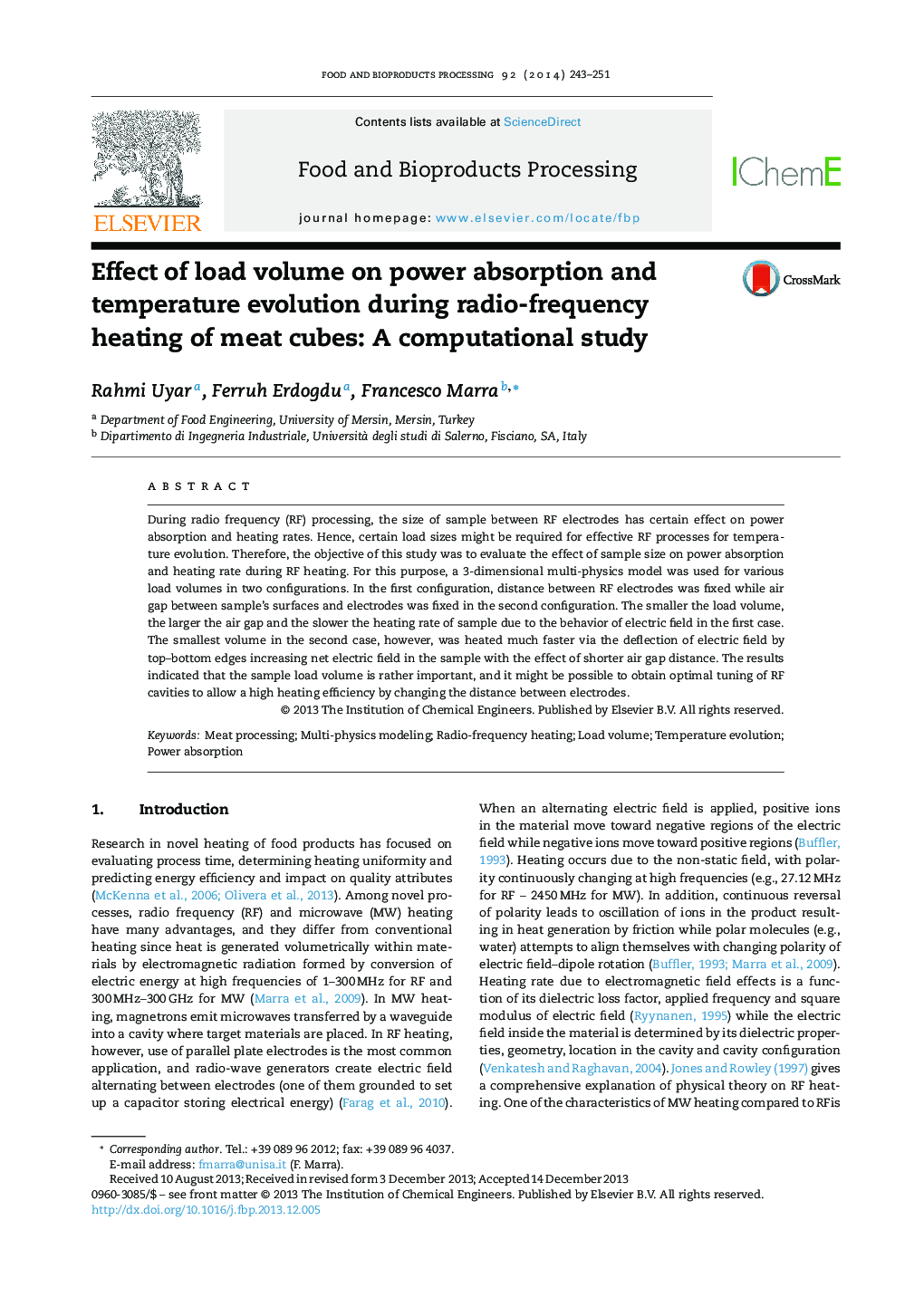| Article ID | Journal | Published Year | Pages | File Type |
|---|---|---|---|---|
| 19079 | Food and Bioproducts Processing | 2014 | 9 Pages |
•Load volume influences the temperature distribution due to RF heating.•Load volume influences the total power and the specific power absorbed by the load.•On load volume depends the optimization of heating in a parallel-plates RF cavity.•Tuning of parallel-plates RF cavity depends also on distance between electrodes.•Distance between electrode and the load must be considered too.
During radio frequency (RF) processing, the size of sample between RF electrodes has certain effect on power absorption and heating rates. Hence, certain load sizes might be required for effective RF processes for temperature evolution. Therefore, the objective of this study was to evaluate the effect of sample size on power absorption and heating rate during RF heating. For this purpose, a 3-dimensional multi-physics model was used for various load volumes in two configurations. In the first configuration, distance between RF electrodes was fixed while air gap between sample's surfaces and electrodes was fixed in the second configuration. The smaller the load volume, the larger the air gap and the slower the heating rate of sample due to the behavior of electric field in the first case. The smallest volume in the second case, however, was heated much faster via the deflection of electric field by top–bottom edges increasing net electric field in the sample with the effect of shorter air gap distance. The results indicated that the sample load volume is rather important, and it might be possible to obtain optimal tuning of RF cavities to allow a high heating efficiency by changing the distance between electrodes.
